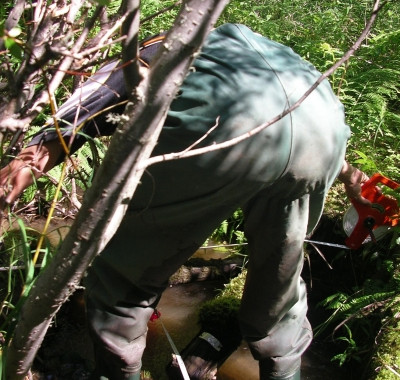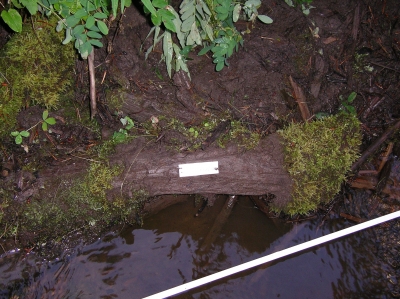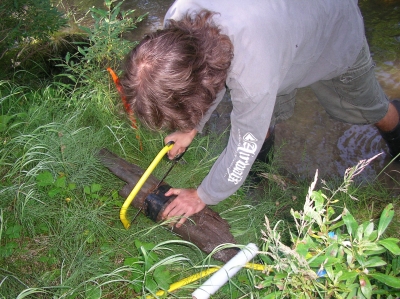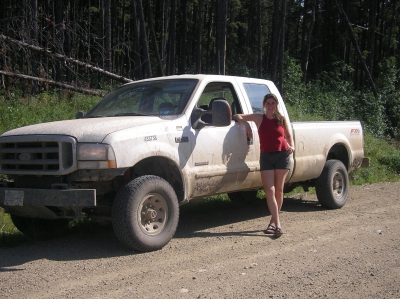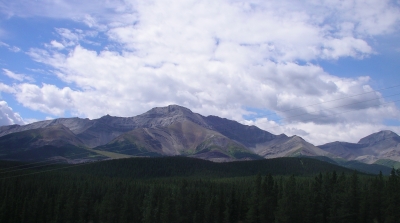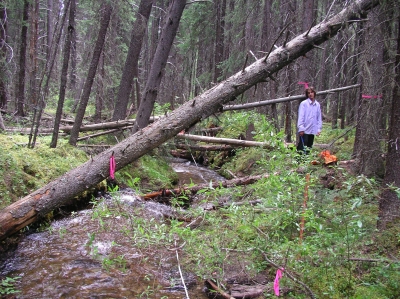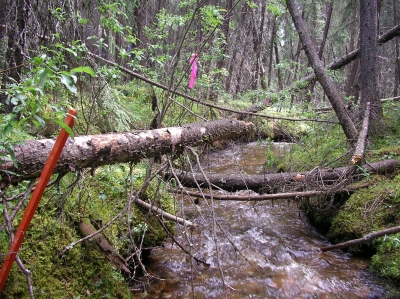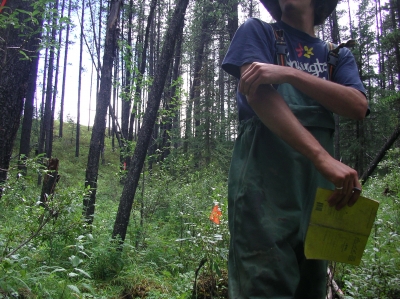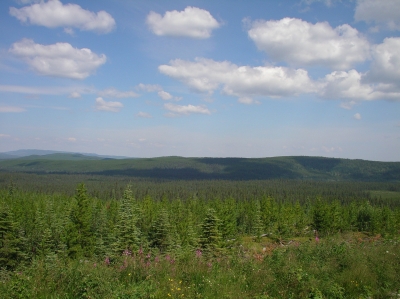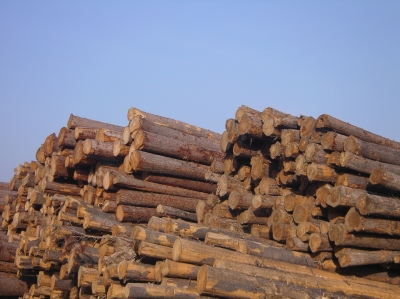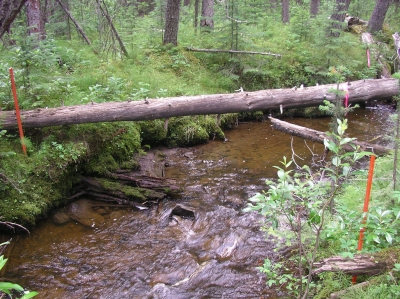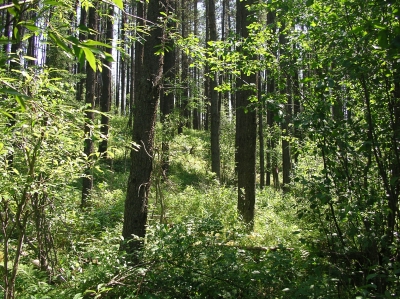Wood Inventory and Dendroecological Analysis of Large Woody Debris in Small Streams, Hinton, Alberta
- UBC Tree Ring Lab

- Oct 23, 2006
- 3 min read
Updated: Sep 15, 2021
Sonya Powell, M.Sc. Thesis (2006)
Department of Geography, University of British Columbia, Vancouver
Abstract
This research explores large woody debris (LWD) dynamics in five 100-year old lodgepole pine-dominated and five 100-year old spruce-dominated riparian forests of the Foothills Model Forest in west-central Alberta. The objectives of my research were (1) quantify the abundance and type of in-stream LWD in mature pine and spruce forests, (2) determine ages of in-stream LWD using tree-ring methods, (3) compare ages of LWD to the age structure of canopy trees to determine how disturbance and stand dynamics contribute to recruitment, and (4) quantify rates of decay and residence times by testing for differences in LWD abundance and volume among sites and among decay and position classes.
To identify spatial aspects of LWD generation, I conducted a census of LWD within a 50m reach at each study site. Individual logs ranged from 0.01 to 0.88m3; total log volumes were 6.62 to 41.35 m3 per ha. For both pine and spruce, log volume decreased significantly between position classes and decay class for both species, largely due to change in the length of logs between classes. To identify temporal aspects of LWD generation, a dendroecological analysis was conducted. Two major disturbance types generated large woody debris in mature riparian forests. Lodgepole pine-dominated stands established ca. 1890 to 1900 after fires. During canopy closure, ca. 40 years after stand initiation, a pulse of tree mortality generated LWD. At the spruce-dominated sites, canopy trees established between 1730 and 1910. These stands were in later stages of stand development and within-stand disturbances generated LWD during the 1900s. I successfully estimated the year of death of 180 logs; 56% of estimates were high quality estimates from samples that included bark and/or sapwood. The age of LWD increased significantly with decay and position classes. The oldest LWD of lodgepole pine, white spruce and black spruce were 82, 137 and 80 years, respectively.
Given the longevity of LWD, I conclude that management decisions that alter the abundance and rate of recruitment of LWD into streams have long-term implications for the structure and dynamics of riparian environments as well as in-stream habitat and biodiversity.
Research Contributions
Journal Publications
Daniels, L.D., S. Butler, P. Clinton, B. Ganesh-Babu, K. Hrinkevich, A. Kanote, E. Keeling, S. Powell & G.E. Speer. 2006. Whitebark pine stand dynamics at Morrell Mountain, Montana. Pp. 15-29 in Speer, J.H. (ed.) Field-Based Educational Investigations: Examples from the 14th Annual North American Dendroecological Fieldweek. Indiana State University, Department of Geography, Geology, and Anthropology, Professional Paper Series No. 23.
Conference Presentations and Posters
A wood inventory and dendroecological analysis of large woody debris in small streams in the Foothills Model Forest, Hinton, Alberta. Presented by S.R.E. Powell. Co-Author: L.D. Daniels. Presented at Northwest Scientific Association Meeting, Victoria, BC, February 2007.
A dendroecological analysis of large woody debris in lodgepole pine riparian forests of the Foothills Model Forest, Alberta. Presented by S.R.E. Powell. Co-Author: L.D. Daniels. Presentation at the Annual Meeting of the Association of American Geographers, Denver, CO, March 2005.
LARGE woody debris in small streams. Presented by S.R.E. Powell. Co-Author: L.D. Daniels. Presentation at the Annual Meeting of the Association of American Geographers, Philadelphia, PA, March 2004.
LARGE woody debris in small streams. Poster Presented by S.R.E. Powell. Co-Authors L.D. Daniels, S. Powell, D. Andison and R. McCleary. Annual Meeting of the Canadian Association of Geographers. Victoria, BC, May 2003.
Current Position
Sonya Powell is continuing her education in nursing at UBC.
For further information, contact Dr. Lori Daniels, Department of Forest Sciences, University of British Columbia, lori.daniels@ubc.ca





